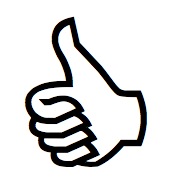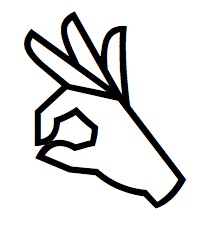OK?
Kako nekomu pokažeš, da je vse OK?
Lahko takole:

Thumbs up. Kot da bi štopal. Tako sem vedno kazal jaz, dokler nisem šel na potapljaški tečaj. Tam so mi povedali, da to pomeni “hočem gor”. Da se OK pokaže takole:

Kot Vegeta. A-OK. In sem preklopil na Vegeto. In do sedaj mi je dobro služila.
V Turčiji pa A-ok ni OK1.
Making an ‘O’ with your thumb and forefinger (as if to say “OK!”) is rude because you are making the gesture for a hole – which has connotations refering to homosexuality in the Turkish psyche.
Wikitravel
Namesto tega priporočajo thumbs up.
Ampak pozor, če potujete naprej v sosednji Iran:
The thumbs up gesture is extremely rude in Iran, roughly equivalent to raising the middle finger in Western countries.
Hitchhiking is rare in Iran, and the country has a good public transportation system. If you do hitchhike, do not use a thumbs up signal.
Wikitravel
V bistvu je tale thumbs up še v mnogih drugih kulturah bolj žaljiv od Vegete (ta je zares sporna samo v Turčiji in Venezueli, piše na Wikipediji, z zelo grafično razlago kaj pomeni).
“Thumbs up” traditionally translates as the foulest of gesticular insults in some Middle Eastern countries — the most straightforward interpretation is ‘Up yours, pal!’ The sign has a similarly pejorative meaning in parts of West Africa, South America, Iran, Iraq, and Sardinia, according to Roger E. Axtell’s book Gestures: The Do’s and Taboos of Body Language Around the World.”
Wikipedia
Kaj pametnega lahko potegnem iz vsega tega? Da bom naslednjič definitivno prebral uporabne in zgoščene zapiske na Wikitravel. 🙂 In da ostajam pri A-ok.
- In to sem ugotovil zadnji dan, potem ko sem en teden veselo kazal A-ok na kar pogosta vprašanja, če mi še kaj manjka [↩]
Reply
You must be logged in to post a comment.